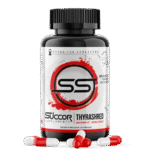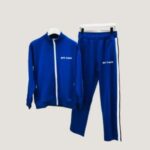In 2025, fitness has evolved into a lifestyle, and with that, fitness advertising has become more competitive than ever. For advertisers, choosing the right Fitness Traffic Network is no longer a luxury—it’s a necessity. Whether you’re promoting personal training ads, supplements, fitness gear, or launching a new Anytime Fitness ad, a strategic traffic network can make or break your campaign.
In this blog, we’ll explore how to choose the best Fitness Traffic Network for your fitness offers, what features to look for, examples of what’s working in the industry, and key trends shaping 2025’s fitness advertising landscape.

What is a Fitness Traffic Network?
A Fitness Traffic Network is a digital advertising platform or marketplace that connects advertisers with targeted fitness audiences. These networks specialize in driving traffic to offers related to workouts, supplements, gym memberships, online fitness programs, health apps, and more.
Some traffic networks focus on display, search, or native ads, while others offer a mix of CPC, CPM, and CPA models tailored to the fitness niche.
Why You Need a Specialized Fitness Traffic Network
The fitness vertical is highly segmented. A one-size-fits-all network won’t understand the nuances between marketing a yoga course versus personal training ads or a Best Gym Ad campaign. Here’s why a fitness-focused network matters:
- Audience Alignment: It connects your ads to people already interested in health and fitness.
- Optimized Conversions: These networks know what creatives convert in the fitness space.
- Compliance Understanding: Networks that work in fitness are more aware of compliance issues with claims and images.
- Advanced Targeting: You can target by interests like “weightlifting”, “yoga”, or “fat loss” instead of just demographics.
Key Features of a Great Fitness Traffic Network
When evaluating a Fitness Traffic Network, consider the following must-have features:
Niche Fitness Publishers
Look for networks that have partnerships with fitness blogs, apps, and forums. These sources often convert better than generic media placements.
Robust Targeting Options
You should be able to target users based on behavior, device, geo, time of day, and interests like bodybuilding, running, or CrossFit.
Creative Flexibility
The best networks support multiple ad formats—video, banners, native, and even rich media. This helps you test different versions of your Anytime Fitness ad or personal training ads.
Transparent Reporting
Real-time performance data, click-level reporting, and conversion tracking are non-negotiables.
Dedicated Account Managers
A network with industry-savvy account reps can help you scale your fitness offers faster with proven tactics.
Popular Fitness Offers that Perform Well on Traffic Networks
Understanding what types of offers are currently performing on top Fitness Traffic Networks will help you benchmark your campaign ideas. Here are the winning categories:
- Supplement Offers: Pre-workouts, fat burners, and multivitamins
- Fitness Challenges: 21-day shred programs, online boot camps
- Gym Membership Ads: Example – a localized Anytime Fitness ad
- Fitness Apparel: Athleisure and training wear
- Online Coaching: Personal trainers offering 1:1 coaching via Zoom
Each of these categories performs best when matched with high-quality creatives and well-optimized landing pages.
Examples of Winning Fitness Ads
Let’s look at a few examples of Best Fitness Ads that thrived due to effective placement on a strong traffic network:
Example 1: Anytime Fitness Ad – Local Targeting Mastery
A local Anytime Fitness ad campaign targeted urban dwellers between 20-35 using native ads. It offered a free trial week. By using mobile-optimized creatives and geo-targeting within a 10 km radius, the campaign saw a 34% conversion rate.
Example 2: Personal Training Ads – Video Conversion Funnels
A personal trainer promoted his online coaching business with short video testimonials. Using a Fitness Traffic Network specializing in video ads and influencer placements, he increased sign-ups by 5x in three months.
Example 3: Best Gym Ads – Display Banners + Incentives
One of the Best Gym Ads came from a boutique fitness studio offering free fitness assessments. Display ads with “before-and-after” visuals were run on health blogs via a network, leading to a 20% increase in walk-ins.
How to Vet a Fitness Traffic Network
Here’s a 5-step checklist you can use to evaluate a Fitness Traffic Network before signing up:
Step 1: Check Niche Focus
Do they specialize in fitness or lump it with general lifestyle? Ask for case studies or previous advertiser success stories.
Step 2: Review Targeting Capabilities
Can they target by fitness goals, user behavior, or app usage? Fitness is diverse—precision targeting is key.
Step 3: Investigate Publisher Inventory
Where will your ads run? Ask about their top-performing fitness sites, mobile apps, or influencers.
Step 4: Evaluate Support & Optimization Tools
Do they offer ad creative feedback, A/B testing tools, or real-time optimization help?
Step 5: Compliance & Ad Approval Speed
Fitness ads often face scrutiny due to claims. Choose a network that helps you stay compliant without long wait times for approvals.
Top Mistakes to Avoid When Choosing a Fitness Traffic Network
Many advertisers waste budget due to these common pitfalls:
>>> Ready to grow your fitness brand? Start with the right traffic network for your niche<<<
Choosing a Generalist Network
Non-niche networks may fail to deliver the intent-driven traffic you need for high-ticket offers like personal training ads.
Ignoring Mobile Optimization
Most fitness traffic comes from mobile. If the traffic source doesn’t focus on mobile, your conversions will suffer.
Not Testing Enough Creatives
Fitness audiences are visual. Rotating Best Fitness Ads with varied formats (before-and-after, testimonials, lifestyle) is crucial.
Not Tracking ROI Properly
Many new advertisers forget to integrate conversion tracking. If you can’t see which traffic sources perform, you can’t scale.
Bonus: Future Trends in Fitness Advertising (2025 and Beyond)

AI-Based Audience Segmentation
AI is increasingly used to predict user intent. Top Fitness Traffic Networks now use AI to optimize campaigns in real time.
Gamified Fitness Ads
Fitness advertisers are adding gamification to their ads—spin wheels, points, or streak rewards—to boost engagement.
Micro-Influencer Integration
Modern networks allow direct ad placement with fitness influencers through automated platforms.
Health + Wellness Convergence
Fitness is merging with mental wellness. Networks now target audiences interested in meditation apps, sleep trackers, and holistic health alongside traditional gym ads.
Conclusion
Choosing the right Fitness Traffic Network can make all the difference in your campaign’s ROI. Whether you’re running a local Anytime Fitness ad, promoting personal training ads, or launching a global fitness challenge, the right network gives you scale, targeting, and performance.
Look for platforms that specialize in the fitness niche, offer real-time analytics, and provide premium publisher inventory aligned with your target audience. Don’t be afraid to test and iterate—just make sure your ad creatives reflect the energy, transformation, and lifestyle your audience aspires to.
In 2025, success in fitness advertising belongs to those who combine powerful traffic sources with compelling fitness offers and data-driven decisions.
FAQ: Choosing a Fitness Traffic Network
What is the best Fitness Traffic Network for beginners?
Ans. Start with networks that offer managed services and niche publisher access, such as 7Search PPC, which has vertical-specific support for health and fitness.
What type of fitness offers work best?
Ans. Offers like online training programs, gym memberships, supplements, and fitness challenges perform well when promoted with value-driven ads.
Are native ads effective for fitness campaigns?
Ans. Yes, native ads work especially well when promoting Best Fitness Ads, like before-and-after results or testimonials.
Can I promote local gym ads through traffic networks?
Ans. Absolutely. Networks with geo-targeting capabilities are perfect for campaigns like an Anytime Fitness ad targeting specific zip codes.
What budget should I start with?
Ans. You can start small—$100 to $300 per campaign—and scale based on ROI. Focus on testing creatives and traffic segments before increasing spend.
How do I ensure compliance in fitness ads?
Ans. Work with a network that understands ad policy for fitness offers. Avoid exaggerated claims and always back results with testimonials or evidence.




